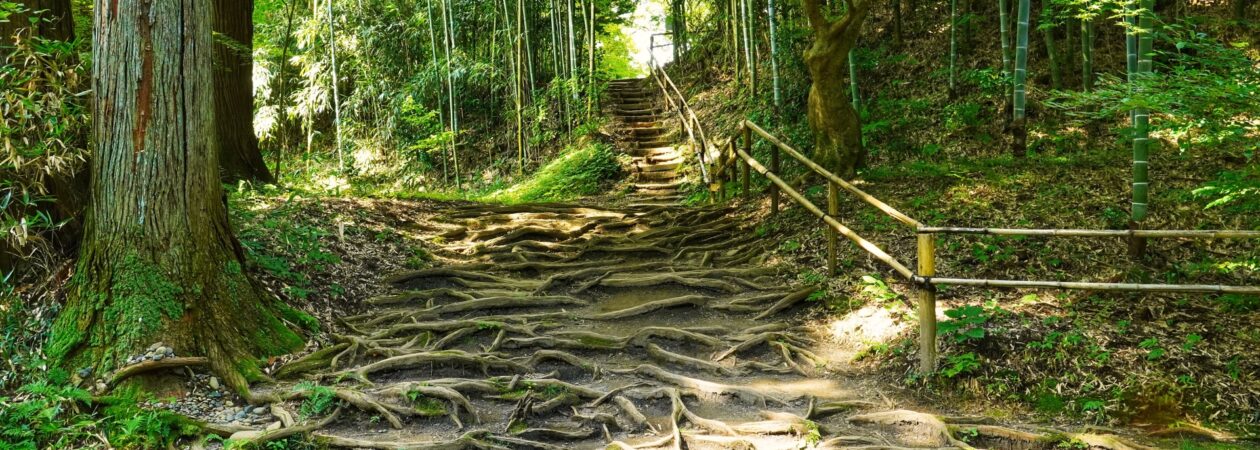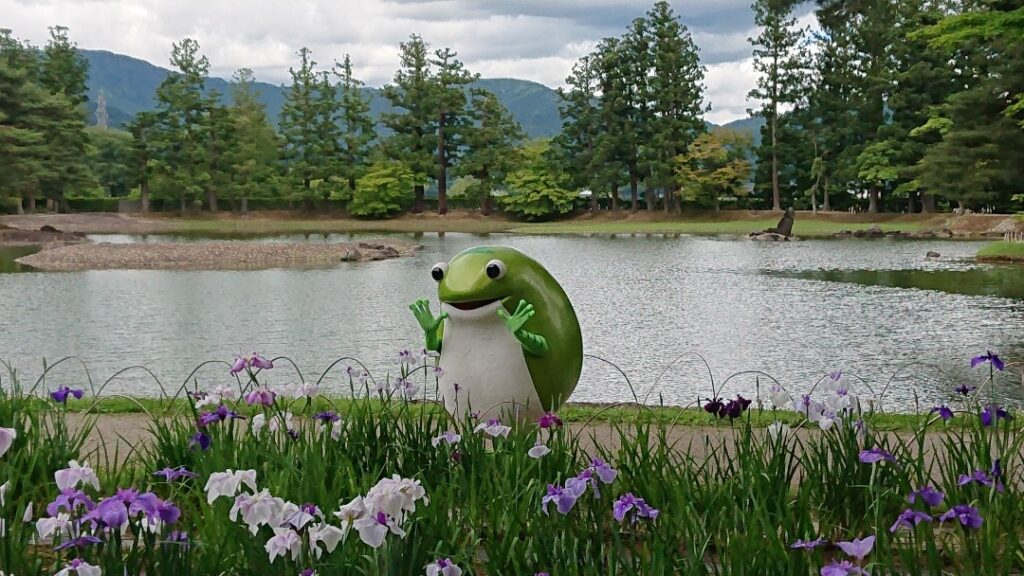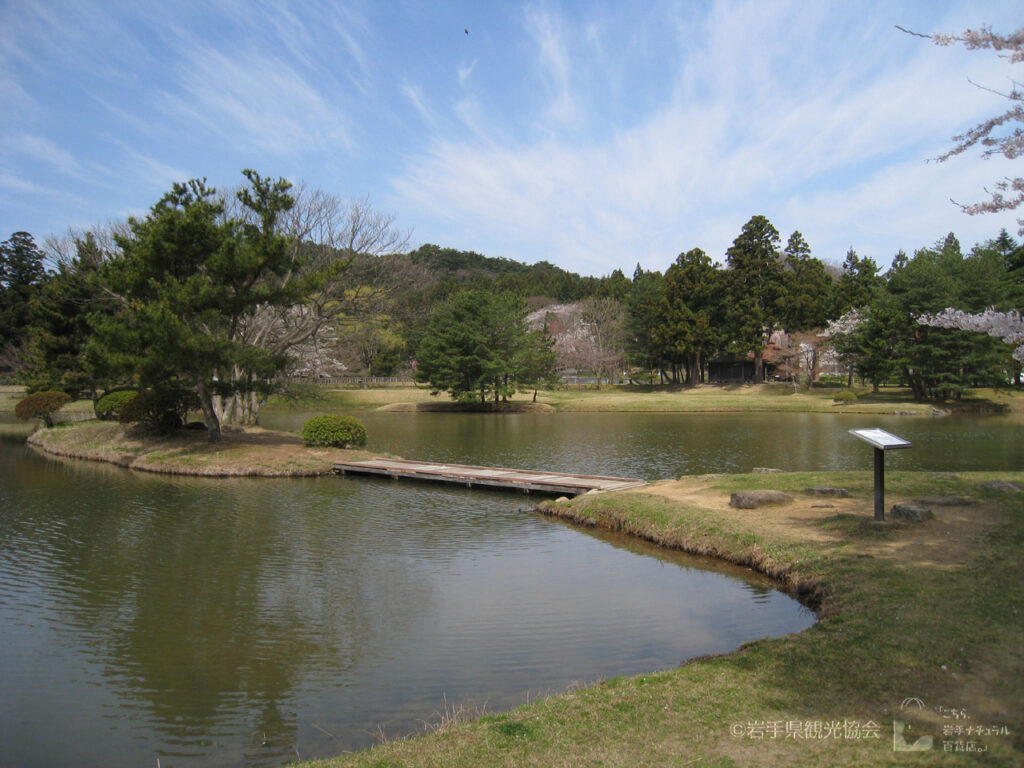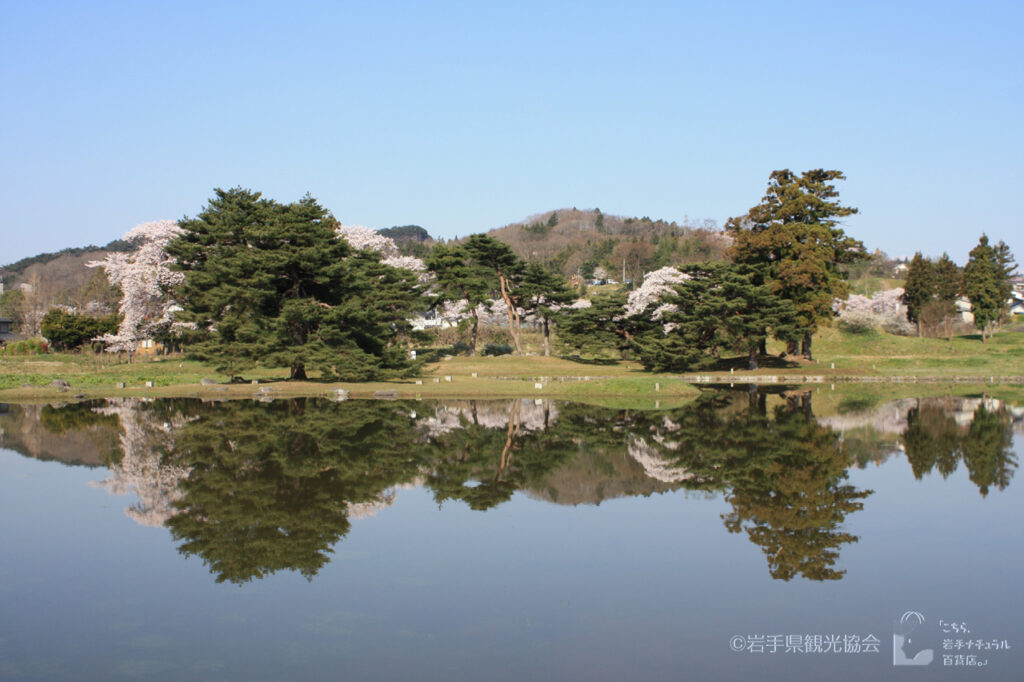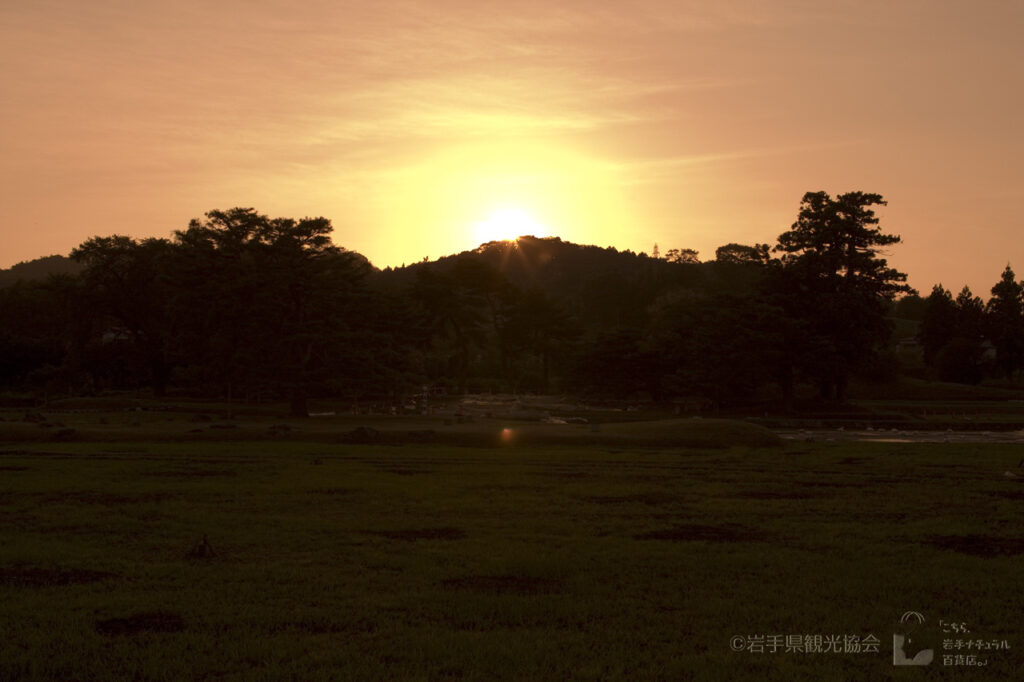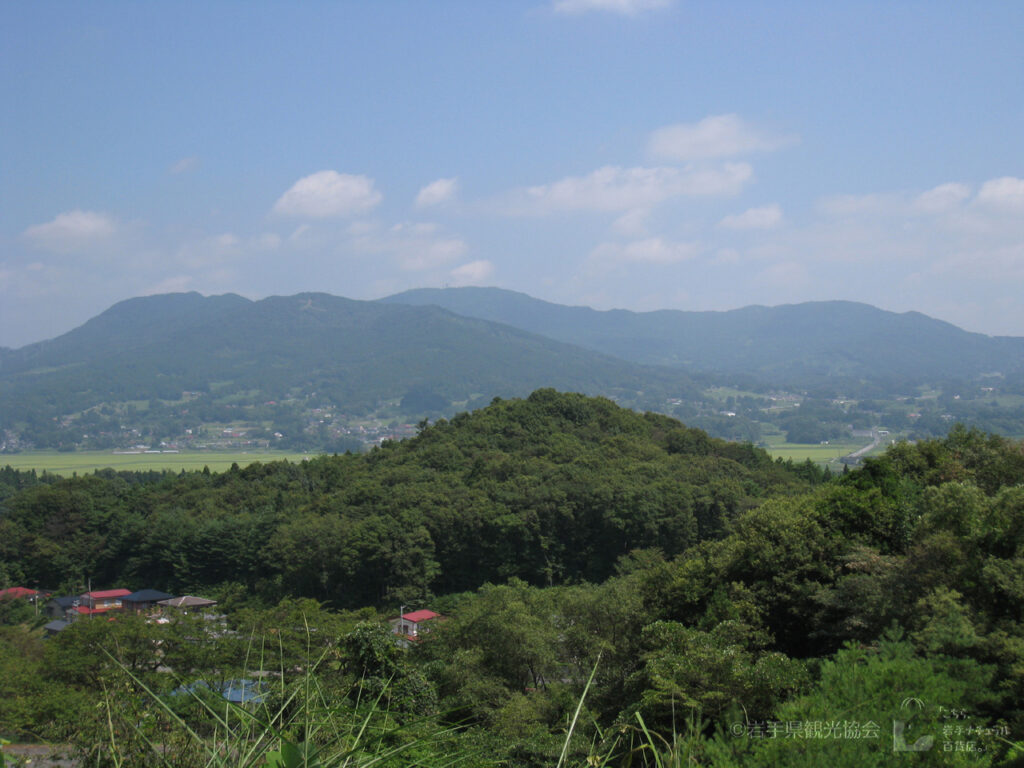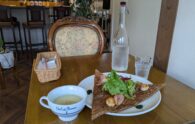Hiraizumi is a town of around 7,300 people located in southern Iwate. In the 12th century, the Tohoku northern region of Japan prospered with the lead of the Oshu-Fujiwara clan, a feudal clan based in Hiraizumi. Around 800 years later, the cultural heritage Hiraizumi was inscripted in UNESCO’s World Heritage List on June 29, 2011. In commemoration of the tenth anniversary of its inscription this year, allow us to share Hiraizumi’s World Heritage with you.
The various temples and gardens of Hiraizumi were created in the image of the Buddhist Pure Land, and remain in good condition. These temples and gardens were built to create the Pure Land on this earth, and while they were influenced by abroad forces, they were developed singularly in Japan. There are no other examples of expression of the Pure Land of the type found in Hiraizumi.
The Cultural Heritage of Hiraizumi comprises of 5 different properties: Chuson-ji Temple, Motsu-ji Temple, Kanjizaioin-ato, Muryokoin-ato, and Mount Kinkei.
Chuson-ji Temple is a temple in the north of central Hiraizumi Town. The first lord of the Oshu-Fujiwara clan, Kiyohira, built Hiraizumi as the political center and seat of government for the northern regions of Japan, and he first created Chuson-ji as the “heart” of the area in order to construct the Buddhist Pure Land on this earth. Within Chuson-ji, the Kawanishi Nenbutsu Kenbai dance is performed even now as a type of cultural folk performance with direct ties to the Buddhist Pure Land form of thought.
Motsu-ji Temple is a temple in the southern end of the town’s center, built during the rule of the second and third lords of the Oshu-Fujiwara clan, Motohira and Hidehira respectively. At the time, there were over 40 temple buildings, and 500 residential quarters for temple monks. It’s said that the Enryu-ji Temple within was praised as having “beauty that no other structure in the land could compare to.”
The large pond within the temple is called Oizumigaike, and is kept in its form as a beautiful Heian period Buddhist garden, healing the hearts of those who view it.
Kanjizaioin-ato is the former site of a temple that was built by the wife of Motohira.
In front of two halls containing images of the Amidabha Buddha, there is a large Pure Land Garden outstretched with the Maizurugaike pond at the center.
All of the structures from the time it was built have since burned down, but work is being conducted in reconstructing those buildings. It is now a park that is used as a place of rest.
Muryokoin-ato is the former site of a temple that was built by the third lord Motohira on the east side of central Hiraizumi. It was built in the image of the Phoenix Hall of Byodoin Temple, located in the Uji area of Kyoto.
The site has almost completely been converted into water paddies, and only the land remains.
In the middle of all of these structures stretching north to south is a direct line that connects to the top of Mount Kinkei. Twice a year in April and August, you can see the sun set right behind the summit of Mount Kinkei.
Mount Kinkei is a mountain in between Chuson-ji and Motsu-ji. The legend says that a pair of golden cockerels, male and female, are buried at the top in order to protect Hiraizumi.
The mountain was also said to be home to sutras (Buddhist texts) buried underground that were created by the Oshu-Fujiwara clan. The mountain became key to the development of the region of Hiraizumi. When the famous poet Matsuo Basho visited Hiraizumi, he wrote a poem about his impression of the mountain.
“Kinkeizan no mi katachi wo nokosu”
“Only Mount Kinkei retains its form.”
For more information on the World Heritage Site Hiraizumi, please check out this website:
https://www.sekaiisan.pref.iwate.jp/
There are many events held per year at Hiraizumi,.
※Some of these events may be cancelled or postponed due to the COVID-19 pandemic.
○ Gokusui no En “Winding Stream Festival”
A recreation of an event held during the Heian period. Participants place small bowls into a manmade stream within the gardens at Motsu-ji. As the bowls float down the river, they think up Japanese classical poems. It is an elegant banquet that recalls the Heian period.
When held: The fourth Sunday in May
Place: Motsu-ji Temple
Ennen no Mai “Longevity Dances”
Performed during on January 20th during the Hatsukayasai Festival (which celebrates the Buddhist deity Matara-jin) as a ritual of respect to the gods. A Shinto prayer is conducted that wishes for peace and a long life free of disaster, and then dances like the Dengenyaku and Kyodonomai are performed.
Where the dance is typically performed: Motsuji Hatsukayasai Festival (January), Fujiwara Spring Festival (June), Bush Clover Festival (September) etc
Hiraizumi usually greets around 2 million visitors a year, but those numbers have sharply dropped because of the COVID-19 pandemic.
However, the value of the World Heritage Site of Hiraizumi remains unchanged, still shining its golden light.
We hope that you one day get to visit Hiraizumi and learn about its history as well as the wishes the Oshu-Fujiwara clan had for peace and serenity.
Japanese
平泉~世界遺産10周年~平泉町は、岩手県南部に位置する人口約7,300人の町です。
12世紀、日本の東北地方では奥州藤原氏が平泉を中心に栄えてきました。
それから800年以上を経た、2011年6月29日、「平泉」はユネスコの世界文化遺産に登録され、今年(2021年)で10年となりました。
今回は「世界遺産 平泉」を紹介します。
平泉には、仏教の中でも、特に「浄土思想」と呼ばれる考え方に基づいて造られた様々な寺院・庭園が、状態良く残っています。これらの寺院や庭園は、この世に理想世界を創り出そうとしたもので、海外からの影響を受けつつ日本で独自の発展を遂げたものです。平泉の理想世界の表現は、他に例の無いものとされています、
「平泉の文化遺産」は5つの資産で構成されています。
「中尊寺」、「毛越寺」、「観自在王院跡(かんじざいおういんあと)」、「無量光院跡(むりょうこういんあと)」そして「金鶏山」です。
中尊寺は、平泉町の中心部北側にある寺院です。奥州藤原氏初代清衡(きよひら)が、日本の北方領の政治・行政上の拠点として平泉を造るにあたり、仏国土(浄土)を表す精神的な中核の寺院として最初に造営されました。
中尊寺の境内では、浄土思想と直接的な関わりを持つ民俗芸能である「川西念仏剣舞(かわにしねんぶつけんばい)」が今なお上演されています。
毛越寺は、奥州藤原氏二代基衡(もとひら)から三代秀衡(ひでひら)の時代に造られた、平泉町の中心部南側にある寺院です。
当時は、堂塔が40以上、禅房(お坊さんが生活する建物)も500もあったとされています。なかでも二代基衡が建造した円隆寺(えんりゅうじ)は、「壮麗さにおいては国内で並ぶものがない」と評されるほどの素晴らしさだったと言われています。
境内にある池は「大泉が池」と呼ばれており、平安時代の美しい庭園の形状を今に留め、心に安らぎを与えてくれます。
【画像①、②】
観自在王院は、基衡の妻が造営したといわれている寺院の遺跡です。
大小の阿弥陀堂(あみだどう)の前面に、「舞鶴が池」を中心とした浄土庭園が広がっています。
当時の建物はすべて焼失してしまいましたが、現在は復元整備が行われて史跡公園として憩いの広場
になっています。
【画像③】
無量光院跡は、奥州藤原氏三代秀衡が造営した平泉中心部の東側にある寺院の遺跡です。無量光院は、京都府宇治の平等院鳳凰堂にならって建立された寺院です。
遺跡のほとんどが水田化し、現在は跡地のみが残っています。
南北に長い伽藍(からん)の中心は、その先の金鶏山の山頂と直線で結ばれます。年に2度、4月と8月に金鶏山の山頂付近に太陽が沈む様子を見ることができます。
【画像④、⑤】
金鶏山は、中尊寺と毛越寺のほぼ中間にある山です。平泉を守るため雌雄一対の黄金の鶏を埋めたという伝説が残っています。
歴代の奥州藤原氏が山頂に経塚(きょうづか)(経文を写して地中に納めた塚)を築いた信仰の山で、平泉のまちづくりの基準となりました。松尾芭蕉も平泉を訪れた際、「金鶏山のみ形をのこす」とこの山の印象を記しています。
【画像⑥】
なお、世界遺産「平泉」については、次のWebページで詳しく紹介しています。
(平泉の文化遺産:https://www.sekaiisan.pref.iwate.jp/)
また、平泉では、毎年様々なイベントが開催されています。その一部を紹介します。
※新型コロナウイルス感染症の影響により、中止・延期となる場合があります。
○曲水(きょくすい)の宴
「曲水の宴」は平安時代の宴を再現したもので、庭園の遣水(やりみず)に盃を浮かべ、流れに合わせて和歌を詠む、平安時代の優雅な歌遊びです。
期間:5月第4日曜日
場所:毛越寺
○延年の舞
毎年正月20日の摩多羅神の祭礼(二十日夜祭)に常行三味供の大法要に続いて神仏に奉納され。
御願円満、息災延命、千秋万歳の「祝詞」があげられ、「田楽躍」「路舞」(唐拍子)「老女舞」「若女舞」「京殿舞」などが演じられます。
主な講演場所:毛越寺二十日夜祭(1月)、春の藤原まつり(5月)、あやめ祭り(6月)、萩祭り(9月)など
平泉には毎年200万人を超える観光客が訪れていましたが、新型コロナウイルス感染症の感染拡大により、観光客数は大きく減少しています。
ですが、平泉の世界遺産は、その価値を損なうことなく、黄金の光を放っています。
いつの日か、ぜひ平泉を訪れて、平泉の歴史や奥州藤原氏の平和と安寧への願いを感じてみてください。
